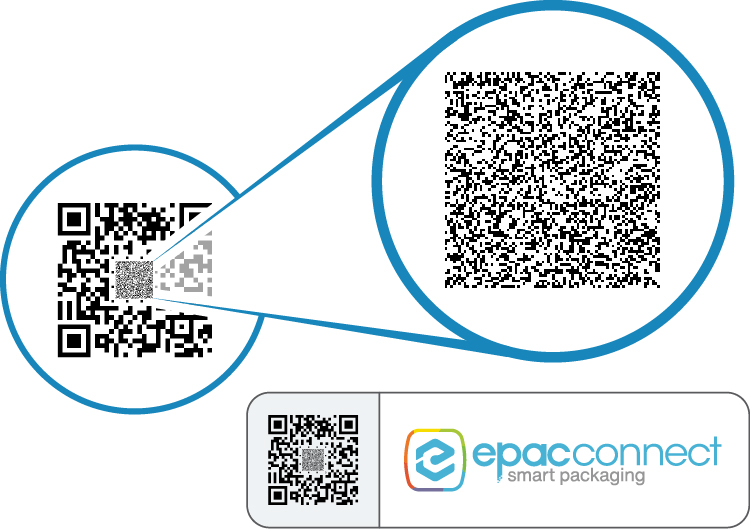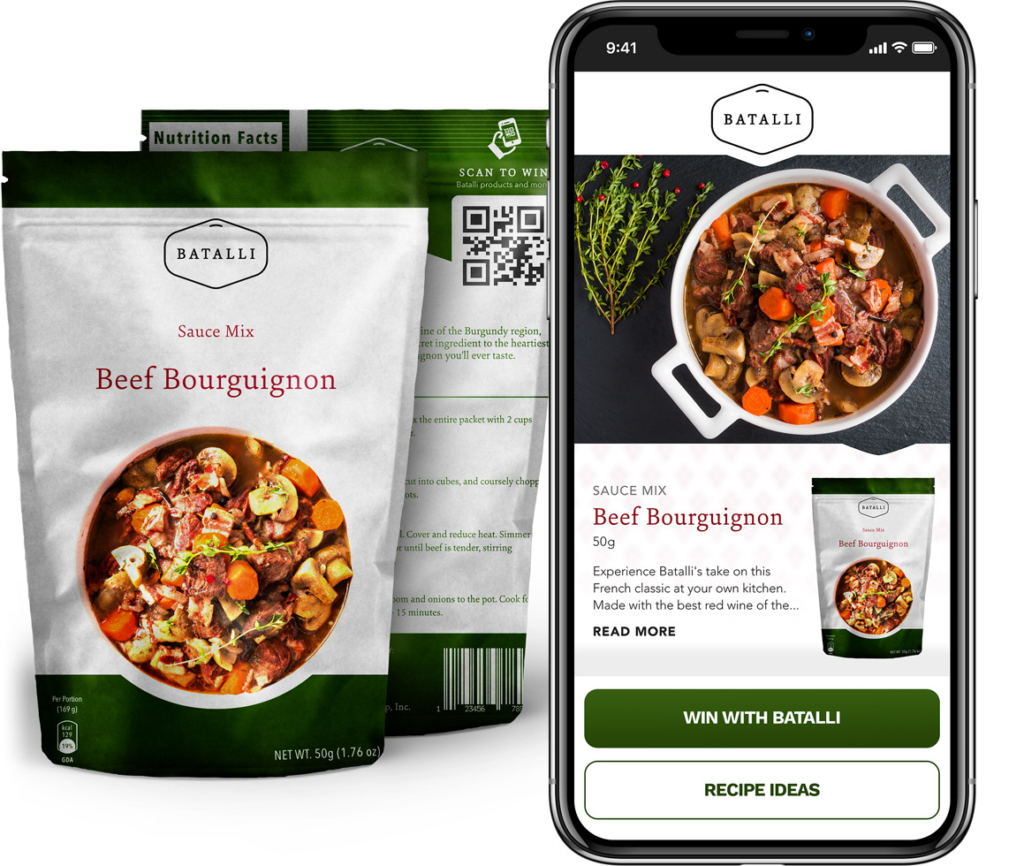Most consumers today have experienced using QR codes, especially in today’s post-pandemic world, where contactless check-ins, data entry, and even virtual restaurant menus have become the norm.
When it comes to leveraging these codes on packaged goods like food, beverage, and household products, there are many opportunities to boost customer engagement and share information.
What Is a QR Code?
A QR code is a 2D barcode that can be scanned with a smartphone camera. There are several types of data that can be stored in a QR Code and that your phone will interpret automatically. The most popular use is a URL like https://epacflexibles.com. You can also store phone numbers, complete business card details (vCard), Wifi passwords and more.
All of this serves to prove that the QR Code is a pretty flexible little symbology that has grown way beyond it’s automotive manufacturing roots. But what if, instead of just one static QR code on all your products, you could customize and serialize the codes, making each uniquely identifiable and dynamic? We’ll get into that in more detail below.
Following are the 5 ways QR code packaging can boost customer engagement with your brand.
1. Personalize Your Engagement with Consumers:
Let’s face it: establishing a direct relationship with your buyers is hard. Consumer products are at the mercy of distributors, retailers and other intermediaries.
Sure you can post on social media and launch an awareness advertising campaign, but there are so many distractions along the way that it’s a miracle you can establish that one-on-one relationship with shoppers the internet promised us in the first place.
With QR codes you can forge a direct engagement with end-users without fighting your competitors for the top spot on Google, or relying on Facebook’s fickle algorithm to show your posts to more than 2% of your followers.
Use QR codes to send consumers to your website to offer additional information. On your site, consumers can view a recipe, video, promotion, download a coupon or even play a game. Plus, you can share product details like instructions, sourcing, and allergen information.
You can even get them to sign up for your newsletter directly from the package so you can continue the dialog later.
2. Product Transparency:
According to a report from Label Insight, 94% of consumers say it’s important that the brands they buy from are transparent about what’s in their food and how it’s made.
Using a QR code, consumers can learn ingredient information, including allergy details, as well as anything they may want to know about the brand like its sustainability goals, sourcing information, philanthropic efforts, and company beliefs.
Consumers may also use track and trace by scanning the given code and learning about the product’s journey from farm, or plant, to store.
3. Product Validation:
Today consumer product counterfeiting has become a huge market. A recent study revealed that 69% of UK consumers have inadvertently bought counterfeit products online, thinking they were genuine, while 21% have bought between four and six counterfeit products.
Product counterfeiting is a real problem, and it’s not going away.
With new developments in QR code technology, you can validate for your consumers that the product they’re buying is the real thing.
New technology, such as serialized QR codes, enable you to create a completely unique code for each package, just like a fingerprint. Each individualized code communicates which batch, plant, and even which plant worker created their particular product. Your buyers can have the peace of mind that the product they bought is true and authentic.
4. Data Collection:
How useful would it be if you knew detailed demographic data about your consumers? Data such as age, gender, geographic concentration and product preferences?
Serialized QR codes are trackable, and with your tracking management software you can gather detailed information about shoppers that can help you optimize your marketing campaigns, improve your product positioning, and even offer new products with a higher probability of success than before you had access to that data.
5. Deliver Critical Last Minute Information:
Product recalls are no fun at all, In fact, according to a 2011 report by the Grocery Manufacturers Association (as reported in the SmartSense blog), more than 80% of survey respondents claimed that the financial risk from recalls was significant to catastrophic.
God forbid your brand would need to implement a product recall, but in the unlikely case this happens, with serialized QR codes you can identify specifically which product batch suffered a problem, isolate the recall information to the individualized QR codes corresponding to that batch, and communicate directly to consumers that their particular package might be compromised.
The benefit? You reduce the financial damage by avoiding a mass recall, while at the same time boosting consumer confidence through transparent communication directly to shoppers.
Partner with ePac
Want to learn more about QR codes for smart packaging? It is key to find the right flexible packaging partner that knows a thing or two about QR codes on product packaging. At ePac, our custom product packaging program ePacConnect allows brand owners to gain a deeper understanding of their customers so they can create a more tailored marketing strategy. Give us a call and we can help you leverage packaging QR codes for a boost in consumer engagement.



